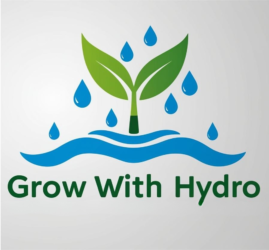Hydroponics can be a game-changer for gardening enthusiasts, but jumping in headfirst without understanding the basics could lead to some frustrating missteps. You got to first grasp the key concepts of hydroponics, like how plants get their nutrients from water rather than soil and the significance of managing this nutrient-rich environment.
When it comes to choosing the right system, the options can be overwhelming. Do you go for a simple flood and drain setup, or dive into the deeper waters of a Nutrient Film Technique? It’s about matching your space, what you’re growing, and your comfort level with the complexity of these systems.
Don’t skimp on understanding the importance of your water and nutrient solutions. Just filling up your system with any old water doesn’t cut it. You’ll need clean, pH-balanced, nutrient-rich water. Think of it as the lifeblood of your plants – getting it right from the start makes a world of difference.
Setting realistic goals can really help keep frustration at bay. Hydroponics can yield amazing results, but it’s not always an overnight success story. Patience is key, as is being prepared to learn from any mistakes along the way. Every gardener has their unique journey, so manage your expectations and enjoy the process!
Material Misjudgments: Overcoming Common Equipment Errors
Starting your hydroponic garden with the wrong equipment can lead to a heap of trouble. The temptation of buying cheap, low-quality gear is powerful, but it often ends up costing more in the long run. Faulty pumps and brittle containers won’t last and could jeopardize your plants’ health.
Now, thinking about the future is crucial. Many newbies overlook scalability. It feels easier to start small, but if you’re serious, consider how your setup might expand later. A cramped system gets tricky to maintain and might limit what you can grow.
Let’s talk lighting – this isn’t one-size-fits-all. Different plants have specific needs, so getting familiar with appropriate lighting is vital. Mismatched lights can leave your plants struggling for growth, putting all your hard work at risk. Lean towards bright, full-spectrum LEDs which are efficient and effective.
And when it comes to choosing a growing medium, not all options are created equal. Whether it’s perlite, rockwool, or clay pellets, each has pros and cons depending on your needs and setup. Spend the time to figure out what will work best with your chosen system and plant type, ensuring you’re not swapping midway due to unexpected challenges.
Maintenance Blindspots: Avoiding Neglect of Vital Components
Cleaning your system routinely isn’t just a chore—it’s essential. A neglected system can house bacteria and algae, both of which can become big problems for your plants. Keep that brush handy for cleaning tubing and containers as part of your regular routine.
Precision matters in hydroponics, especially when it comes to pH and EC levels. Having the right tools to monitor these can prevent a heap of potential problems. Improper levels can hinder plant growth or lead to nutrient lockout, where the plants just can’t absorb what they need.
Just like any garden, pests can find their way into hydroponic systems. Recognizing early signs of trouble is crucial. Aphids, spider mites, and other invaders can strike hard and fast. Keeping a frequent check and deploying organic solutions can make all the difference.
Water levels are easy to overlook but are incredibly important. Too much water can drown the roots, too little can leave them dehydrated. Striking a balance is vital for healthy growth, so keeping an eye on water intake and evaporation is a must.
Knowledge Gaps: Fostering Continued Learning and Adaptation
Misinterpreting plant signals is a common hurdle when starting out. Sometimes it’s a deficiency, other times it might be due to a disease sneaking in. Knowing the difference can save time and prevent crop failures. Regularly reviewing plant care guides and listening to your plant’s ‘language’ will improve your response time.
Joining hydroponic communities, both online and offline, can be one of the best ways to learn. Swapping stories and solutions with fellow enthusiasts not only widens your knowledge but can be an excellent safety net when things go awry.
Small experiments are your friend. Trying out different techniques, nutrient mixes, or plant varieties in small batches can yield insightful results without risking your entire crop. Embrace the science behind hydroponics by conducting these trials and learn from what works or doesn’t.
Staying updated with emerging techniques and technology keeps your hydroponic game strong. Whether it’s the latest in pest control, advanced nutrient solutions, or innovative systems, keeping tabs on new developments will help optimize your setup and boost your yields.
